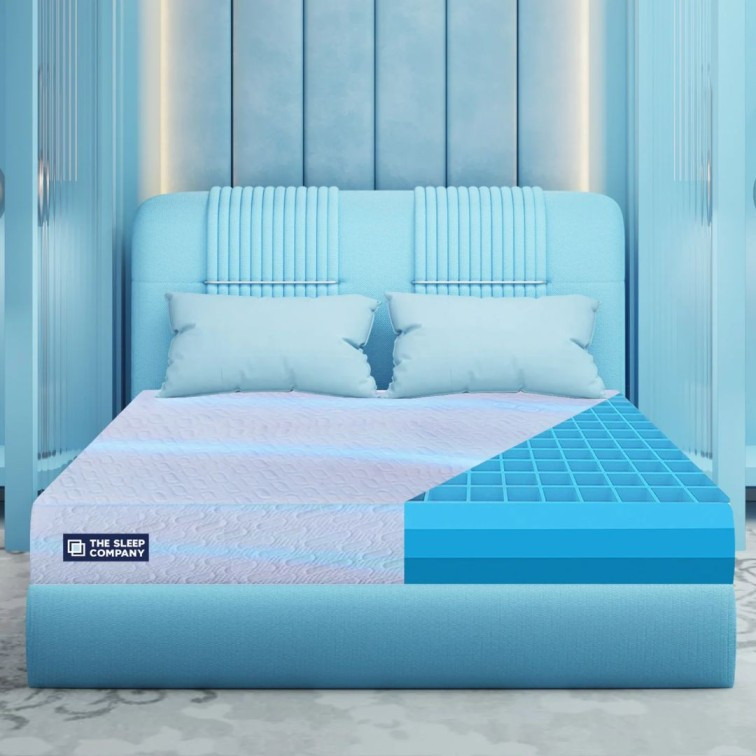views
How to Choose the Right Spring Mattress for Your Body Type?
Choosing the right mattress is one of the most important decisions for your overall health and well-being. Among the many options available, spring mattresses remain a popular choice due to their excellent support, breathability, and durability. However, not all spring mattresses are made equal, and the ideal one for you will depend largely on your body type. A mattress that works well for someone who is lightweight may not offer the same comfort or support for someone who is heavier. Understanding how your body interacts with a spring mattress is essential to make the best choice.
This guide will help you understand how to choose the right spring mattress based on your body type and sleeping needs.
Understanding Spring Mattresses
Spring mattresses are built with a support core made of steel coils or springs. These coils provide bounce, support, and airflow, making the mattress firm and breathable. There are several types of spring systems:
-
Bonnell coils: Traditional hourglass-shaped coils, economical but with more motion transfer.
-
Pocket coils: Individually wrapped springs that reduce motion transfer and contour to the body.
-
Offset coils: Designed for better contouring and support, connected with hinged wires.
-
Continuous coils: Made from a single piece of wire, very durable but less contouring.
The number of coils, coil gauge (thickness), and the comfort layers on top of the springs all contribute to how the mattress feels and performs.
Why Body Type Matters
Your body type determines how much pressure you place on the mattress, how it compresses beneath you, and how well it supports your spine. Here’s how to factor in your weight and body shape when choosing a spring mattress:
1. For Lightweight Sleepers (Below 60 kg)
Challenges:
-
May not compress the mattress enough to feel contouring support.
-
Risk of sleeping on a mattress that feels too firm.
Best Mattress Features:
-
Medium-soft to medium-firm: A slightly softer mattress allows better contouring and pressure relief.
-
Pocket coils: Offer targeted support and conform more gently to the body.
-
Thinner comfort layer is okay, but materials like memory foam or latex on top can add softness.
Tip: Avoid overly firm spring mattresses as they may feel rigid and cause pressure points on shoulders and hips.
2. For Average Weight Sleepers (60–90 kg)
Challenges:
-
Need a balance between softness and firmness for spinal alignment.
-
Shouldn’t sink too much or too little.
Best Mattress Features:
-
Medium-firm: Offers the right balance of support and comfort.
-
Pocketed coil or offset coil systems: Provide tailored support for multiple sleeping positions.
-
Good edge support: Prevents sagging when sitting or sleeping near the edge.
Tip: Look for a coil count above 600 for better durability and support.

3. For Heavyweight Sleepers (Above 90 kg)
Challenges:
-
Greater compression of coils and comfort layers.
-
Risk of sagging or insufficient support.
-
Need for a mattress that maintains shape and firmness over time.
Best Mattress Features:
-
Firm to medium-firm: Prevents excessive sinkage and keeps the spine aligned.
-
High-gauge steel coils (lower number = thicker): 12–13 gauge coils are ideal for heavier users.
-
Zoned support systems: Reinforced coils in heavier pressure areas like the hips and lower back.
-
Thicker comfort layers (3+ inches): For cushioning without compromising support.
Tip: Consider mattresses with reinforced edges and high-density foam layers on top for durability.
4. Consider Sleeping Position Alongside Body Type
Your sleeping position also affects how your body weight interacts with the mattress:
-
Back Sleepers: Need even support across shoulders, spine, and hips. Medium-firm spring mattresses work well.
-
Side Sleepers: Require more pressure relief for shoulders and hips. A pocket coil mattress with a soft comfort layer is ideal.
-
Stomach Sleepers: Need a firmer surface to prevent the midsection from sinking, especially in heavier individuals.
-
Combination Sleepers: Need responsive mattresses that adapt to movement. Pocket or offset coil mattresses are great for motion adaptability.
5. Other Factors to Consider
-
Motion Isolation: Pocket coils are better than traditional coils at isolating motion ideal for couples.
-
Edge Support: Essential for people who use the full mattress surface.
-
Mattress Height: Taller people or those with joint pain may benefit from a thicker mattress (10–14 inches).
-
Cooling Features: Spring mattresses naturally sleep cooler, but added cooling gel layers or breathable covers are a plus.
-
Trial Period and Warranty: Always choose brands that offer trial periods and at least a 10-year warranty to test comfort and longevity.
Final Thoughts
Choosing the right spring mattress for your body type is not just about comfort—it’s about long-term spinal health, restful sleep, and waking up pain-free. A mattress that suits your weight and shape will provide better pressure relief, alignment, and durability.



Comments
0 comment